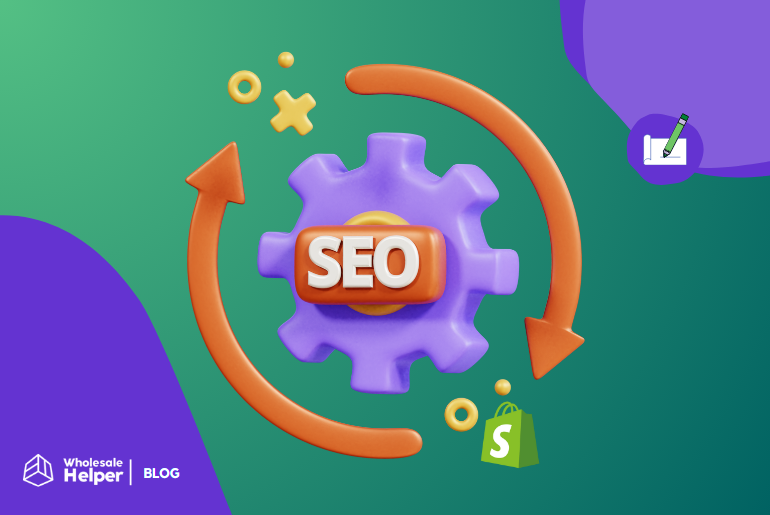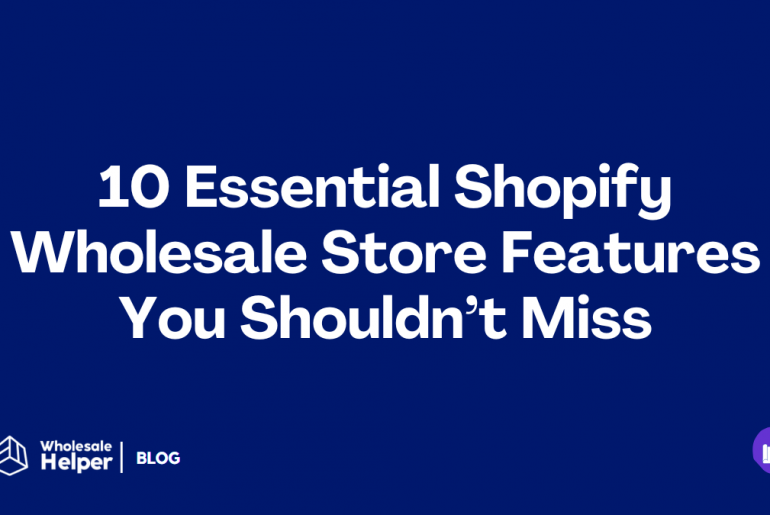As the online buying market grows, e-commerce businesses encounter high competitiveness. To stand out, attract more visitors, and enhance sales, it’s essential to implement effective SEO marketing strategies. Here are the four ecommerce SEO marketing strategies for Shopify merchants that will help them double traffic and sales in 2024.
1. Optimizing product page
Optimizing product pages is one of SEO’s key elements since it impacts both user experience and click rate. Here are various strategies that help merchants to boost product pages:
Keyword-rich product descriptions
It’s crucial to use comprehensive and keyword-rich product descriptions. Integrating pertinent keywords smoothly into product descriptions can improve search reach and site view. Besides that Shopify merchants need to make sure the descriptions are informative, and compelling and provide necessary details so that potential customers can make a purchase decision. This improves SEO and also enhances the shopping experience, leading to a higher conversion rate.
Highlighting Unique selling points (USPs)
Highlighting Products’ USPs on product pages can help to stand out from other competitors. It may take time to identify products USPs that make a product special: high quality, cutting-edge technology, outstanding customer service, or attractive pricing. USPs can effectively attract potential buyers and convince them to choose your product over competitors.
Schema application
Applying schema markup to product pages can greatly enhance SEO. Because it will help search engines understand page content better and lead to improvements in search results. For instance, rich snippets that display product ratings, prices, and availability can make your listings more appealing in search engine results pages (SERPs), resulting in increased click-through rates.

2. Meta Tags Optimization
Optimizing meta tags is a crucial element of e-commerce SEO that can greatly affect site’s visibility and click-through rates. Here are several essential strategies for enhancing meta tags.
Well-optimized meta title
Creating unique and relevant title tags for each product and category page is essential. The meta title needs to incorporate primary keywords and provide a brief, clear overview of the page’s content. In particular, the ideal length of meta title is around 55-60 characters and should include keywords and a brand name.
Attractive meta descriptions
To attract more clicks from Search engine results, engaging meta descriptions are a significant factor. The ideal length of meta description is from 130 to 160 characters and CTA. Also, it should include relevant keywords and highlight key benefits and features of products which can boost customer attention and then increase click rate. Please note that meta descriptions should be brief, compelling, and direct, highlighting what makes the product or page valuable to the searcher.
Bulk editing tools for meta tags
Using bulk editing tools for meta tags can save time and ensure consistency across store sites. There are many tools for bulk editing like SearchPie (for Shopify stores) that will allow merchants to edit and update meta tags in bulk, making it easier to implement changes across numerous pages. This is particularly useful for large e-commerce sites with extensive product catalogs, where manual editing would be time-consuming and prone to errors.
Implementing these meta-tag optimization techniques can enhance the site’s visibility in search engine results, boost click-through rates, and ultimately generate more traffic and sales.
3. URL structure
An effective URL structure and well-organized site architecture are crucial components of a successful e-commerce SEO strategy. They enhance the user experience and help search engines crawl and index your site more efficiently. Here are some key practices to optimize URLs:
SEO-friendly URL patterns
SEO-friendly URL patterns involve URLs that are clean, concise, and keyword-rich. Steer clear of long sequences of numbers or unrelated characters. Instead, utilize descriptive words that precisely reflect the page’s content. For example, a URL like “www.yourstore.com/mens-running-shoes” is much more effective than “www.yourstore.com/category123/product456.” This helps search engines comprehend the page content and makes URLs more user-friendly and easier to remember.
Logical category hierarchies
Organizing a website with logical category hierarchies is essential for both SEO and user experience. Group related products into well-defined categories and subcategories which will be intuitive, allowing users to easily navigate from broad categories to more specific subcategories. For instance, a logical hierarchy might be “Clothing > Men’s Clothing > Men’s Running Shoes.” This clarity helps search engines comprehend the connections between various parts of your site, enhancing overall crawlability and ranking.
Internal linking strategy
An effective internal linking strategy improves the flow of link equity throughout your site and helps users discover related content. Employ internal links to link related products, categories, and blog posts. This not only extends the time visitors spend on your site but also assists search engines in grasping the context and significance of various pages. For instance, linking from a blog post titled ‘The Best Running Shoes for 2024’ to your running shoe product category page can drive traffic and boost the rankings of both pages.
By focusing on these aspects of URL structure and site architecture, you can create a more user-friendly and search engine-friendly e-commerce site. This will boost the site’s visibility, draw more organic traffic, and ultimately drive higher sales.
4. Site Speed Optimization
Optimizing site speed is also an effective method to improve user experience and boost conversion rates. Websites that load swiftly not only retain visitor engagement but also reduce bounce rates and enhance overall site performance. Here are some effective strategies for site speed optimization:
Image Compression Techniques
Images often constitute the largest files on a webpage. making them key candidates for optimization. For detail, image compression involves a technique that reduces file size but remains the same quality. Shopify merchants can use tools like TinyPNG, JPEG Optimizer or SearchPie to compress images before uploading them to the store site.
Minification of CSS and JavaScript
Minifying CSS and JavaScript for SEO involves reducing the file sizes by removing unnecessary characters like spaces, comments, and line breaks which will help decrease file sizes and speed up load times. There are many tools to minify it such as UglifyJS and CSSNana that automate this task. By serving smaller, more efficient files, you can speed up the rendering of your web pages and enhance the overall user experience.
Instant Page Technique
Instant Page will help to improve website speed and user experience by preloading web pages before the user clicks on a link. This method forecasts user actions and preloads the page in the background, ensuring it appears to load instantly when the user clicks.
Summing up
Optimizing e-commerce websites for SEO and user experience is key to driving organic traffic and increasing conversions. By using meta-tag optimization, creating an effective URL structure, and improving site speed, merchants can build a more visible, user-friendly, and efficient website that boosts sales and business success.
Make sure to regularly check your website’s performance with tools like Google Analytics 4 and adjust as needed to enhance the user experience. Keep these 4 important tips in mind as you develop or improve your e-commerce site for the best results.









